Zhuo Cheng
When Prompt Engineering Meets Software Engineering: CNL-P as Natural and Robust "APIs'' for Human-AI Interaction
Aug 09, 2025Abstract:With the growing capabilities of large language models (LLMs), they are increasingly applied in areas like intelligent customer service, code generation, and knowledge management. Natural language (NL) prompts act as the ``APIs'' for human-LLM interaction. To improve prompt quality, best practices for prompt engineering (PE) have been developed, including writing guidelines and templates. Building on this, we propose Controlled NL for Prompt (CNL-P), which not only incorporates PE best practices but also draws on key principles from software engineering (SE). CNL-P introduces precise grammar structures and strict semantic norms, further eliminating NL's ambiguity, allowing for a declarative but structured and accurate expression of user intent. This helps LLMs better interpret and execute the prompts, leading to more consistent and higher-quality outputs. We also introduce an NL2CNL-P conversion tool based on LLMs, enabling users to write prompts in NL, which are then transformed into CNL-P format, thus lowering the learning curve of CNL-P. In particular, we develop a linting tool that checks CNL-P prompts for syntactic and semantic accuracy, applying static analysis techniques to NL for the first time. Extensive experiments demonstrate that CNL-P enhances the quality of LLM responses through the novel and organic synergy of PE and SE. We believe that CNL-P can bridge the gap between emerging PE and traditional SE, laying the foundation for a new programming paradigm centered around NL.
HSSBench: Benchmarking Humanities and Social Sciences Ability for Multimodal Large Language Models
Jun 04, 2025



Abstract:Multimodal Large Language Models (MLLMs) have demonstrated significant potential to advance a broad range of domains. However, current benchmarks for evaluating MLLMs primarily emphasize general knowledge and vertical step-by-step reasoning typical of STEM disciplines, while overlooking the distinct needs and potential of the Humanities and Social Sciences (HSS). Tasks in the HSS domain require more horizontal, interdisciplinary thinking and a deep integration of knowledge across related fields, which presents unique challenges for MLLMs, particularly in linking abstract concepts with corresponding visual representations. Addressing this gap, we present HSSBench, a dedicated benchmark designed to assess the capabilities of MLLMs on HSS tasks in multiple languages, including the six official languages of the United Nations. We also introduce a novel data generation pipeline tailored for HSS scenarios, in which multiple domain experts and automated agents collaborate to generate and iteratively refine each sample. HSSBench contains over 13,000 meticulously designed samples, covering six key categories. We benchmark more than 20 mainstream MLLMs on HSSBench and demonstrate that it poses significant challenges even for state-of-the-art models. We hope that this benchmark will inspire further research into enhancing the cross-disciplinary reasoning abilities of MLLMs, especially their capacity to internalize and connect knowledge across fields.
Nanosatellite Constellation and Ground Station Co-design for Low-Latency Critical Event Detection
Mar 03, 2025Abstract:Advancements in nanosatellite technology lead to more Earth-observation satellites in low-Earth orbit. We explore using nanosatellite constellations to achieve low-latency detection for time-critical events, such as forest fires, oil spills, and floods. The detection latency comprises three parts: capture, compute and transmission. Previous solutions reduce transmission latency, but we find that the bottleneck is capture latency, accounting for more than 90% of end-to-end latency. We present a measurement study on how various satellite and ground station design factors affect latency. We offer design guidance to operators on how to choose satellite orbital configurations and design an algorithm to choose ground station locations. For six use cases, our design guidance reduces end-to-end latency by 5.6 to 8.2 times compared to the existing system.
LQoCo: Learning to Optimize Cache Capacity Overloading in Storage Systems
Mar 21, 2022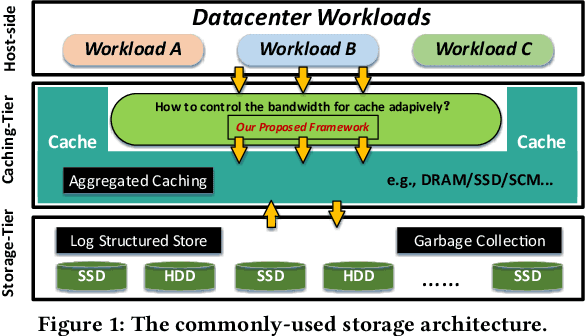

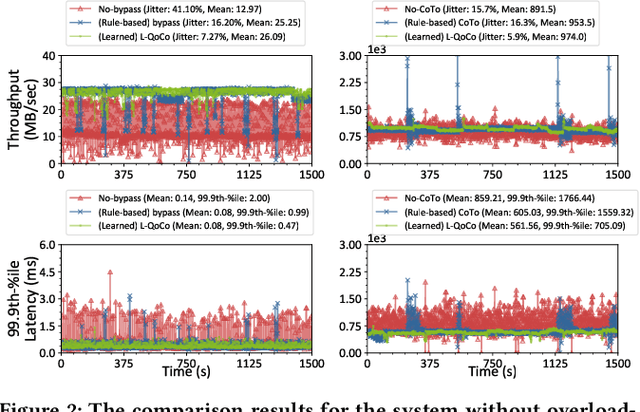

Abstract:Cache plays an important role to maintain high and stable performance (i.e. high throughput, low tail latency and throughput jitter) in storage systems. Existing rule-based cache management methods, coupled with engineers' manual configurations, cannot meet ever-growing requirements of both time-varying workloads and complex storage systems, leading to frequent cache overloading. In this paper, we for the first time propose a light-weight learning-based cache bandwidth control technique, called \LQoCo which can adaptively control the cache bandwidth so as to effectively prevent cache overloading in storage systems. Extensive experiments with various workloads on real systems show that LQoCo, with its strong adaptability and fast learning ability, can adapt to various workloads to effectively control cache bandwidth, thereby significantly improving the storage performance (e.g. increasing the throughput by 10\%-20\% and reducing the throughput jitter and tail latency by 2X-6X and 1.5X-4X, respectively, compared with two representative rule-based methods).
Learning to Plan and Realize Separately for Open-Ended Dialogue Systems
Oct 04, 2020
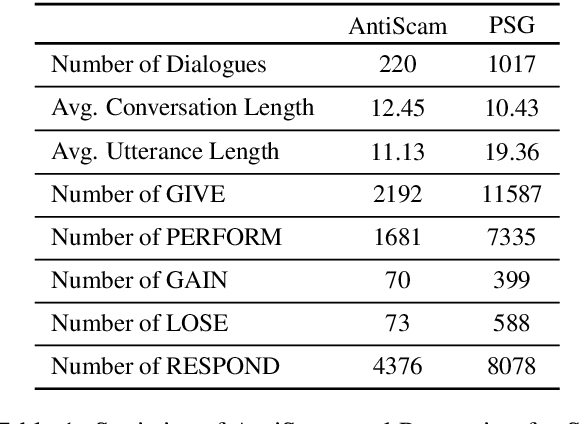


Abstract:Achieving true human-like ability to conduct a conversation remains an elusive goal for open-ended dialogue systems. We posit this is because extant approaches towards natural language generation (NLG) are typically construed as end-to-end architectures that do not adequately model human generation processes. To investigate, we decouple generation into two separate phases: planning and realization. In the planning phase, we train two planners to generate plans for response utterances. The realization phase uses response plans to produce an appropriate response. Through rigorous evaluations, both automated and human, we demonstrate that decoupling the process into planning and realization performs better than an end-to-end approach.
The Panacea Threat Intelligence and Active Defense Platform
Apr 20, 2020

Abstract:We describe Panacea, a system that supports natural language processing (NLP) components for active defenses against social engineering attacks. We deploy a pipeline of human language technology, including Ask and Framing Detection, Named Entity Recognition, Dialogue Engineering, and Stylometry. Panacea processes modern message formats through a plug-in architecture to accommodate innovative approaches for message analysis, knowledge representation and dialogue generation. The novelty of the Panacea system is that uses NLP for cyber defense and engages the attacker using bots to elicit evidence to attribute to the attacker and to waste the attacker's time and resources.
Detecting Asks in SE attacks: Impact of Linguistic and Structural Knowledge
Feb 25, 2020
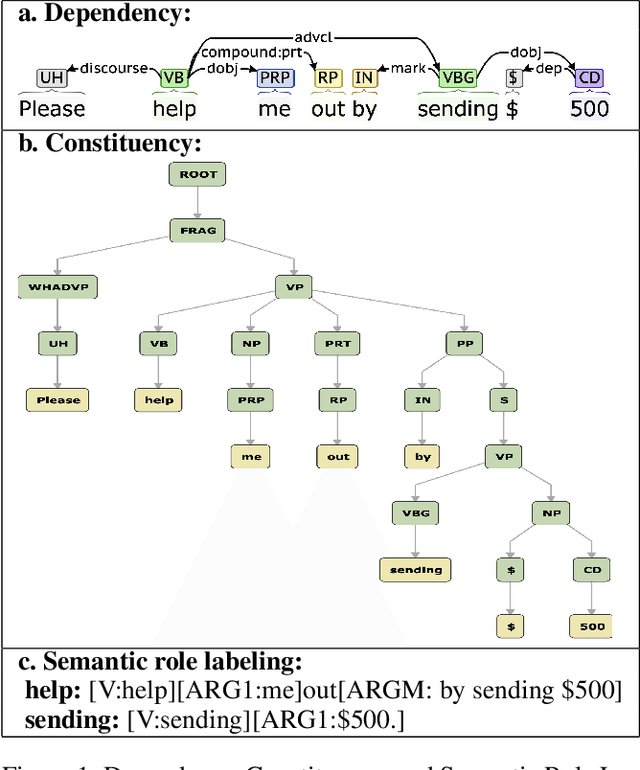
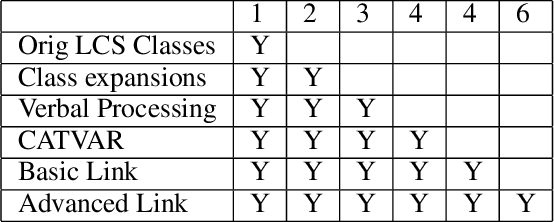
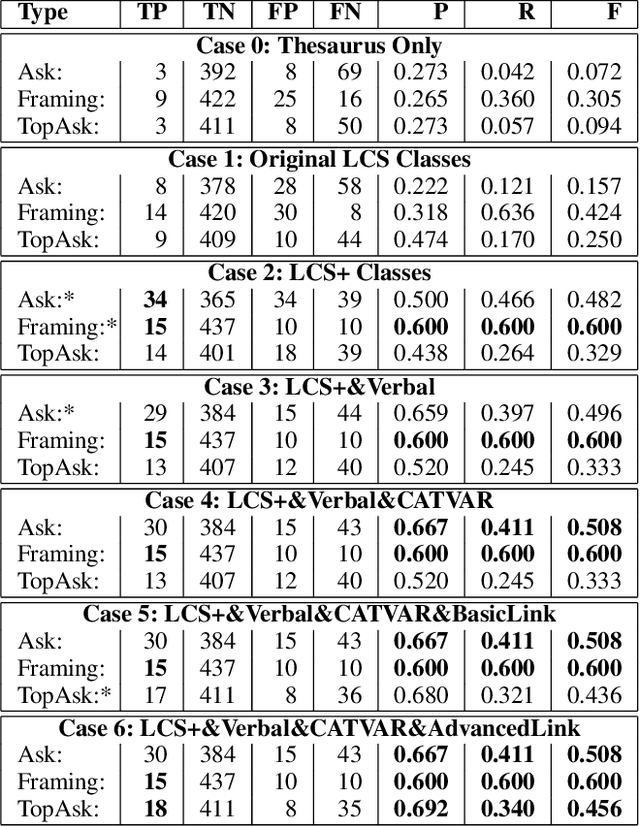
Abstract:Social engineers attempt to manipulate users into undertaking actions such as downloading malware by clicking links or providing access to money or sensitive information. Natural language processing, computational sociolinguistics, and media-specific structural clues provide a means for detecting both the ask (e.g., buy gift card) and the risk/reward implied by the ask, which we call framing (e.g., lose your job, get a raise). We apply linguistic resources such as Lexical Conceptual Structure to tackle ask detection and also leverage structural clues such as links and their proximity to identified asks to improve confidence in our results. Our experiments indicate that the performance of ask detection, framing detection, and identification of the top ask is improved by linguistically motivated classes coupled with structural clues such as links. Our approach is implemented in a system that informs users about social engineering risk situations.
Deep CSI Learning for Gait Biometric Sensing and Recognition
Feb 06, 2019
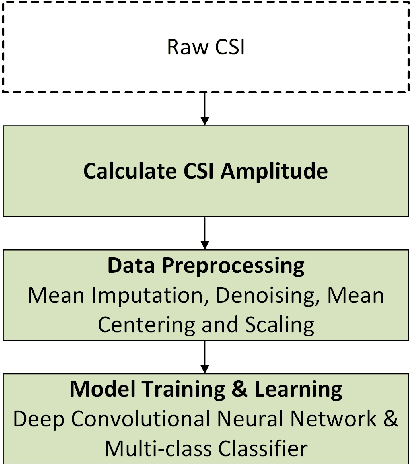
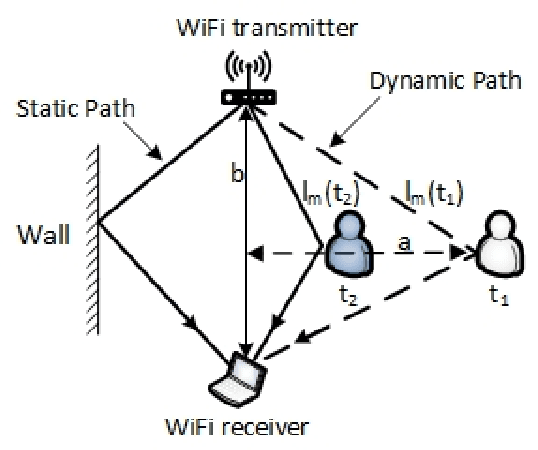
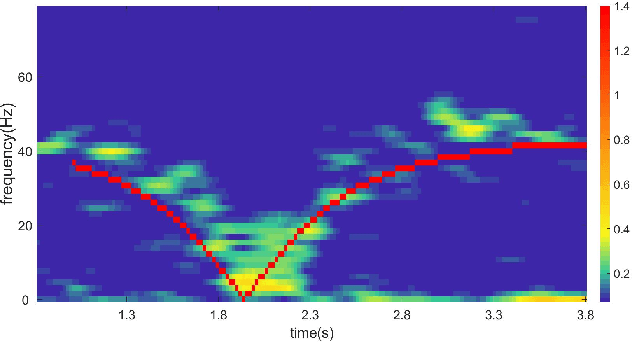
Abstract:Gait is a person's natural walking style and a complex biological process that is unique to each person. Recently, the channel state information (CSI) of WiFi devices have been exploited to capture human gait biometrics for user identification. However, the performance of existing CSI-based gait identification systems is far from satisfactory. They can only achieve limited identification accuracy (maximum $93\%$) only for a very small group of people (i.e., between 2 to 10). To address such challenge, an end-to-end deep CSI learning system is developed, which exploits deep neural networks to automatically learn the salient gait features in CSI data that are discriminative enough to distinguish different people Firstly, the raw CSI data are sanitized through window-based denoising, mean centering and normalization. The sanitized data is then passed to a residual deep convolutional neural network (DCNN), which automatically extracts the hierarchical features of gait-signatures embedded in the CSI data. Finally, a softmax classifier utilizes the extracted features to make the final prediction about the identity of the user. In a typical indoor environment, a top-1 accuracy of $97.12 \pm 1.13\%$ is achieved for a dataset of 30 people.
 Add to Chrome
Add to Chrome Add to Firefox
Add to Firefox Add to Edge
Add to Edge